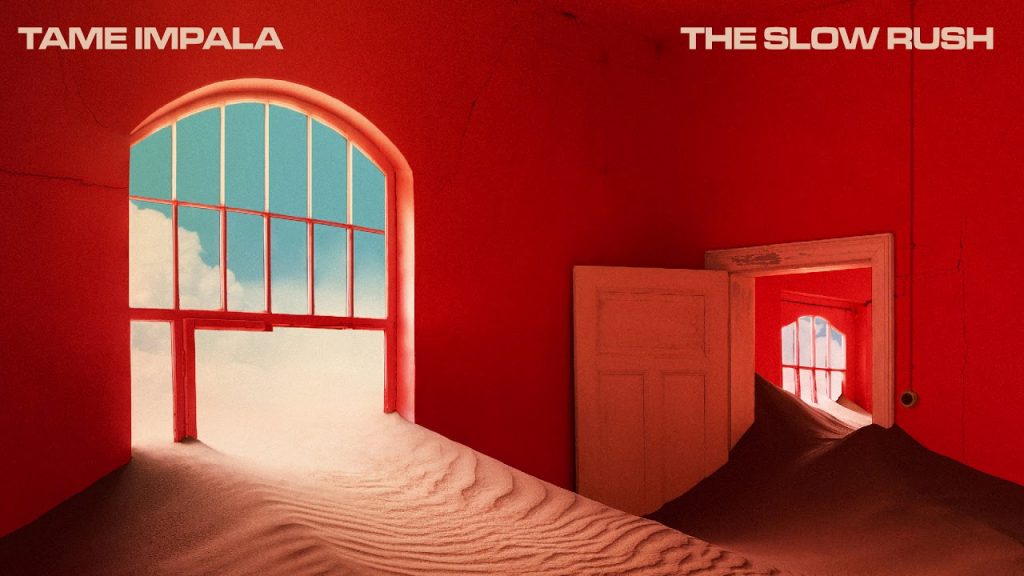After a five-year wait, a Coachella headlining set and an ever-growing reputation as one of the biggest rock acts of the last decade, Kevin Parker’s solo recording project, Tame Impala, has finally released its fourth studio album, “The Slow Rush.” The new album aims to complete Tame Impala’s transition from rock to pop that began on its third album, “Currents.” Although this may be the most pop Tame Impala album yet, its psychedelic aesthetic keeps the record grounded within the Tame Impala canon.
The album flows in a kaleidoscopic fashion, with each track diving into different sonic ideas, marking “The Slow Rush” as Tame Impala’s most diverse record to date. The opener, “One More Year,” sets the stage with a psychedelic house track that balances swirling vocoder effects with a straightforward beat while never breaking a sweat. “Borderline,” a single released last year, reappears here in a reworked edition. Pummeling synths and explosive drums dominate the mix, while the gimmicky pan flute plays a more muted role in this version. Although less memorable than the original version, the rework plays better within the track list.
“Breathe Deeper” stands out as the most immediate song on the album, as it blends Parker’s dance-pop aspirations and his psychedelic production style to near perfection. Singles like “Lost in Yesterday” and “It Might Be Time” shine in the track list, while deep cuts “On Track” and “Is It True” add more diversity in the form of balladry and dance punk. “Glimmer,” the penultimate track, starts with a distorted spoken word passage, then jolts into a short jam before fading out. At a little over two minutes in length, it serves as a motif or interlude rather than a cohesive song. Despite its refreshing brevity compared to the rest of the album, it is the most nonessential song in the track listing. The closing number, “One More Hour,” takes a surprisingly minimal approach before bursting into auditory fireworks, as Parker flexes his producing skills and leaves “The Slow Rush” firing on all cylinders.
While Parker may sprawl when it comes to production choices, his lyricism remains tied to one central theme. Bookended by the songs “One More Year” and “One More Hour,” Parker spends much of “The Slow Rush” ruminating on time and the absence of it. “Posthumous Forgiveness” is split into two parts, with the first half containing a bitter eulogy of Parker’s father and the second half seeing Parker directly addressing his father and wishing for him to see all of his success. It serves as the most personable and heartbreaking moment on the record. “It Might Be Time” addresses Tame Impala’s inevitable exit from the zeitgeist and the feeling of obsolescence in an increasingly younger and sprightlier world. “The Slow Rush” builds upon the preceding album’s themes of change in a natural and exciting way, rather than recycling its message over new songs.
Fans of Tame Impala have no shortage of material to be divisive over. The Australian musical project now has two rock records and two pop records under its belt, yet with each release, Tame Impala has refused to tread the same water. “The Slow Rush” is not the departure that “Currents” was from its second album, “Lonerism.” Rather, “The Slow Rush” is a more obtuse offering that tackles themes as large as “Currents” does, but is less immediate than its predecessor. None of these songs sound ripe to go viral on TikTok like “The Less I Know the Better,” but their dense compositions and catchy melodies offer riches of pop gold.
“The Slow Rush” will envelop you in its world, but only if you have the time.



